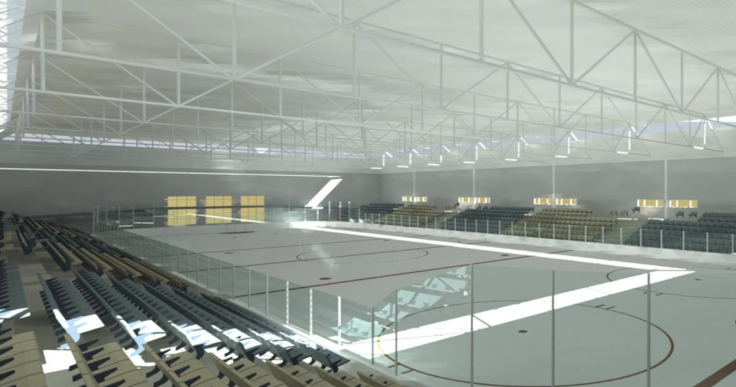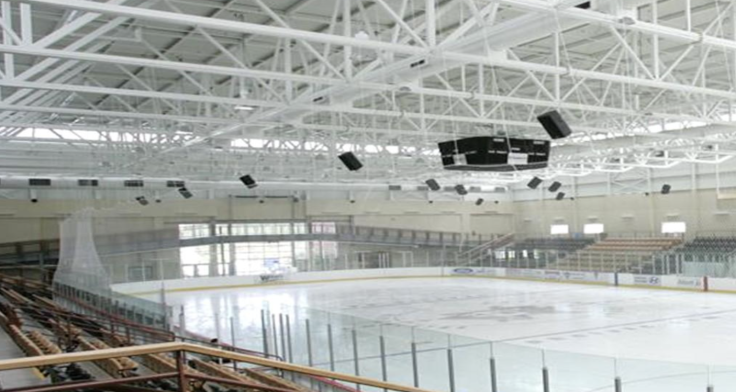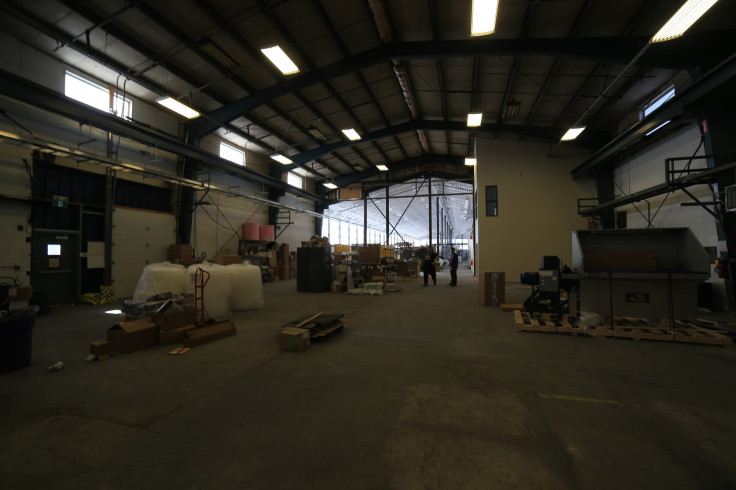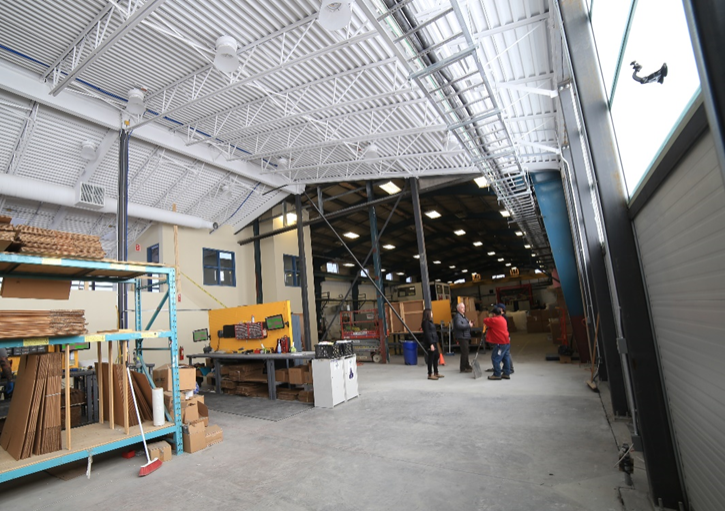Creating High Quality, Sustainable Low-Rise Commercial Buildings

Article by Doug Milburn, co-founder and chairman of Advanced Glazings Ltd
A quality building is healthy, comfortable, attractive, and, of course, sustainable. When people come to work, shop, play, live, and have their needs attended to, they prefer to be in quality buildings- and in almost every case, they benefit the bottom line for commerce and human health.
However, there is the perception—not entirely divorced from the historical status quo—that healthy, sustainable design seems to be mainly relegated to higher-end (e.g. expensive) buildings- currently the domain of large government and massive private corporate facilities.
Pre-engineered metal buildings now represent more than 70% of all commercial construction activity in North America. This massive sector, looked upon by some as simple and inexpensive, represents a prime opportunity for better energy management and the creation of healthier spaces for employees and customers.
Pre-engineered metal buildings and similar low-rise construction techniques are famous because they are priced lower than buildings made with brick, stick and mortar techniques. Any attempts to improve energy efficiency and occupant comfort must recognize that cost is a critical factor.
But is it possible to create high-quality pre-engineered buildings within the current cost-constrictive paradigm? It is! New technology has made it achievable while imbuing structures with many more human and planet-friendly features than many people think are attainable with limited budgets.
One of the most essential elements of any building is the façade. The façade protects occupants from weather extremes and plays a central role in determining the energy efficiency of your building. However, the façade is critical in connecting building occupants to the natural world. This connection is essential to our health, wellness, and productivity. In the modern era, better buildings for humans have views and daylight at a minimum. Productivity increases of up to 20% have been demonstrated, and retail sales increases of up to 40% have also been proven. The payback is clear!
Whether the envelope is corrugated metal, tilt-up concrete, or insulated metal panels doesn't matter. Appropriate insulation is still essential to ensure energy efficiency and occupant comfort. It's also critical to use envelope elements to provide views and daylight.
Placing a handful of transparent glass windows in the envelope alone will not provide daylight. It will provide views and create intense bright spots, leaving most of the space dark. This requires either the use of shades to reduce the contrasts between bright and dark and requiring supplemental lighting to replace what could have been free and carbon-free light. However, engineered light-diffusing glazing in windows for daylighting will spread the light evenly and deeply in any building. When paired with clear windows, the result is views combined with soft, natural light that makes the building a joy to be in – thus transforming it into a high-quality building!
Light diffusers made from single-use plastics are not optimal for quality buildings. If the building is to be regularly occupied by employees, members, customers, etc., single-use plastics will send the wrong message regarding sustainable design. The short lifespan results in a higher total cost of ownership and an overall higher embodied carbon for the building. And, of course, people will not perceive your building as "of quality" with yellowing plastics displayed prominently on the envelope. That isn't good for the perception of your brand and the way your employees and customers will feel about entering the space when they first look at it. It's 2024- customers and employees are paying attention to these aspects.
The Fully Realized Solution
Solera® and SoleraWall®, glass-based engineered light diffusers, are the perfect addition to a low-rise commercial building façade. They have incredibly high insulation levels to ensure energy efficiency and occupant comfort; they are sound attenuating and will ensure the building is awash in soft, natural daylight. The correct approach is to use clear windows where the view is the prime need and to use these engineered diffusers where the quality of interior illumination is the differentiator to making the building a better one for humans to thrive in. This can be achieved without compromising the low-cost paradigm that owners need!
Port Hawkesbury Arena
The Veteran's Memorial Arena in the Port Hawkesbury Civic Centre Complex in Nova Scotia, CA (pictured above before Solera® installation) was designed and built with efficiency in mind and is one of the few hockey rinks in the world that allows for natural daylight to illuminate the ice surface. Home to The Strait Pirates Junior Hockey League, the arena has hosted numerous regional and national sporting events and large-scale concerts since its opening in 2004. The arena has 1000 fixed seats and can accommodate an additional 1000 seats, theatre-style or 700 banquet-style, on the ice surface.

Before the Solera® installation, the building was dark and dreary, with bright contrasting areas, creating problems for spectators and skaters due to glare contrast and even dangerous soft ice in the bright areas.

Now, as seen here, the facility is a wonderfully bright, naturally lit space perfect for all occupants- a dramatic improvement across the board. It's also important to remember that the athletes who train and compete here regularly experience a boost in how they feel and see, which has a proven direct impact on performance- a clear advantage in an athletic facility use case.
Protocase Building 2

The Protocase Building 2 is also in Sydney, Nova Scotia. The above photo captures the situation before the Solera® installation, and you can see that this would not be a suitable environment for humans in an office space capacity- which is the use case it enjoys today.

Here, we experience the "lights off in the daytime" benefit post-Solera® installation. What an incredible difference.
The bottom line is that nascent technology has made it possible to win the war on dull buildings and offer various human-benefiting features previously thought unattainable at a reasonable price point. Architects, building owners, facility managers, founders, planners, employees, students, athletes – all occupants and stakeholders in the value chain for the built environment can revel in the good news. Next time you find yourself trying to work or learn in a dark box, note that such structures are now officially from a bygone era.
About Doug Milburn
As a long-time entrepreneur and innovator, Dr. Doug Milburn, founder of Advanced Glazings, thrives on solving problems. For over 35 years, he's brought passion and vision to manufacturing, engineering, software development and process engineering. Throughout his leadership, Dr. Milburn has aimed to create great workplaces by shaping a company's success through corporate values and ethical guidelines.
About Advanced Glazings Ltd.
Great buildings need a connection to the outdoors, which is only achieved through glass. At Advanced Glazings Ltd, we understand that making that connection is challenging. Our Solera® line of highly insulating light diffusing glass and decades of combined experience in daylight design make it easy for you to create stunning buildings that will 'wow' everyone who enters. We also host and produce a podcast called Better Buildings for Humans, the premier destination for the best content anywhere about how the built environment impacts health, wellness, productivity, and more.
© Copyright IBTimes 2025. All rights reserved.





















